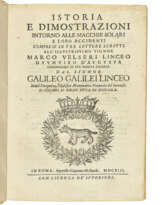ID 1360799
Lot 83 | Istoria e dimostrazioni intorno alle macchie solari e loro accidenti
Estimate value
$ 10 000 – 20 000
First edition of Galileo’s published endorsement of the Copernican model, "domestic" issue, containing the second part "De maculis solaribus tres epistolae", with letters written to Marcus Welser by the Jesuit Christoph Scheiner. It is this correspondence, in which Scheiner promotes his theory of sunspots as small planets, that prompted Galileo to publish his account of his own observations. Galileo wrote the Istoria e dimostrazioni in the form of letters to Welser, arguing that sunspots appeared on the surface of the sun and were not tiny satellites of it. Based on observations of their motion, Galileo concluded that the sun rotated on a fixed axis. The work also includes Galileo's first written account of his observations of the phases of Venus and the mysteries of Saturn. His specific endorsement of the Copernican model foreshadowed many of his later theories and their political and religious consequences: "I tell you that this planet also, perhaps no less than horned Venus, agrees admirably with the great Copernican system on which propitious winds now universally are seen to blow" (Stillman Drake's translation). Two issues were published simultaneously, one with and one without Scheiner's letters, aimed respectively at the domestic Italian market and international market. Since Scheiner was then teaching at Ingolstadt, the printer Mascardi felt free to publish his letters in Italy, as printing north of the Alps would infringe upon Scheiner's privileges. Cinti 44.
Two parts in one volume, quarto (217 x 155mm). Printer's woodcut device on title, engraved portrait of Galileo, 38 full-page engravings of sunspots, 5 full-page engravings of Jovian satellites (the latter plates trimmed to or nearly to platemark, with no. 5 shaved past rule with loss to number); the second part with 1 folding plate, 1 full-page plate, and others in text (leaves T2-T3, V3-V4 in first part and quires E-G in second part trimmed, small loss in upper inner corner through first few gatherings of first part, with small corresponding gouge in top edge continuing throughout, large repair to final leaf affecting imprint). Modern binding using manuscript leaf.
| Artist: | Galileo Galilei (1564 - 1642) |
|---|---|
| Place of origin: | Italy |
| Auction house category: | Printed books |
| Artist: | Galileo Galilei (1564 - 1642) |
|---|---|
| Place of origin: | Italy |
| Auction house category: | Printed books |
| Address of auction |
CHRISTIE'S 20 Rockefeller Plaza 10020 New York USA | ||||||||||||||
|---|---|---|---|---|---|---|---|---|---|---|---|---|---|---|---|
| Preview |
| ||||||||||||||
| Phone | +1 212 636 2000 | ||||||||||||||
| Fax | +1 212 636 4930 | ||||||||||||||
| Conditions of purchase | Conditions of purchase | ||||||||||||||
| Shipping |
Postal service Courier service pickup by yourself | ||||||||||||||
| Payment methods |
Wire Transfer | ||||||||||||||
| Business hours | Business hours
|
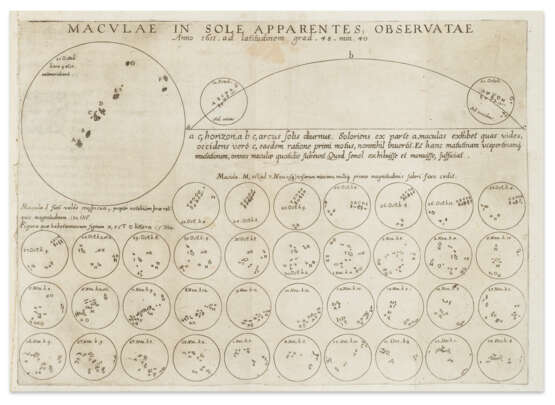
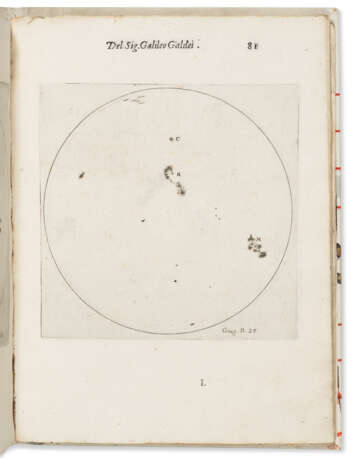
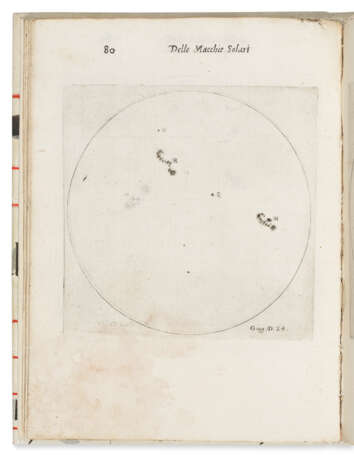
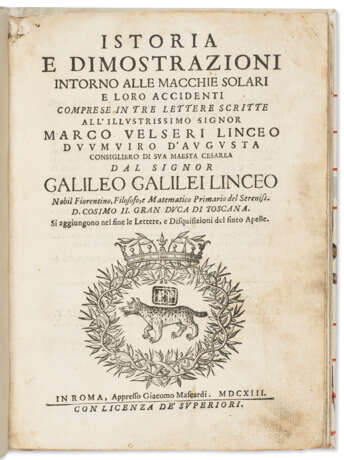

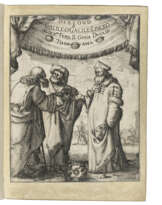

![[GALILEO GALILEI (1564-1642) and Girolamo SPINELLI (c.1580-1647)]](/assets/image/picture_4734998/81ecb/b78ba02793ea9f7c89bc2421c803edfc1752012000jpg__fix_162_205.jpeg)


